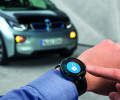Connected cars for beginners - Overview

WHAT ARE “CONNECTED VEHICLES” AND “INTELLIGENT TRANSPORT SYSTEMS”?
Although connected vehicles and intelligent transport systems (ITS) can seem abstract, they are already present in vehicles and include the following systems and technologies:
- Active security systems,
- eCALL,
- Infotainment and in-car internet,
- Connected vehicle or collaborative intelligent transport systems,
- Autonomous driving,
STAKEHOLDERS
Because of the enormous revenue generation opportunity the connected environment potentially offers (more than €275 billion by 2025), a large number of stakeholders are present on the connected vehicle market, from car manufacturers, automotive suppliers, mobile operators and telecommunication services providers, IT companies, public authorities, to insurance and repair, data management and analytics companies, application developers and users.
COMMUNICATIONS PROTOCOL
There are two main protocols used for vehicle to infrastructure communication: a specialised form of Wi-Fi called DSRC (Dedicated Short-Range Communications) and cellular network technologies such as 3G and LTE, currently 4G, and 5G in the future.
The main advantages of DSRC are short latency, limited interference, low sensitivity to weather conditions and the fact that it is free, as it does not require subscription to a mobile operator’s network. As for cellular network technologies, there is close to 100% mobile network coverage in most developed countries, with high levels of population equipped with a mobile phone with data transfer capabilities. Cellular network technologies also offer communication not limited to vehicles but including all road users equipped with a mobile phone.
STATE OF DEVELOPMENT
SYSTEMS
While many manufacturers, suppliers and IT companies actively work on V2X systems, there aren’t many demonstrators available to see. In contrast, autonomous cars benefit from a much bigger level of exposure.
DEPLOYMENT PILOT SCHEMES
Several real world deployment tests have been or are being conducted around the world.
- The largest one was conducted by the National Highway Traffic Safety Administration of the US Department of Transportation and the University of Michigan Transportation Research Institute in Ann Arbor for almost a year with nearly 3,000 connected vehicles equipped with built-in or aftermarket devices.
- The city of Nanjing has equipped 500 intersections and a range of vehicles with emission and reception devices and is collecting and analysing data.
BUSINESS MODELS
V2X technologies are expensive and have low monetisation potential. However the surrounding connected environment potentially offers large revenue generation opportunities via:
- Services
- Car manufacturers
- Other traditional players
- New players
- B2B
MOTOR SPORT
A limited amount of what could be considered as the premises of connected technology already exists in motor sport.
AUTOMATIC MARSHALING: the dashboard lights notifying the driver of a flag being waved in the sector (yellow, red, etc.) or to his attention (blue) is a very basic application of V2I communication through two-way telemetry and GPS positioning. A virtual safety car system is under evaluation in F1, consisting in the imposition of a speed limit to a car entering a neutralised race track sector. Two-way telemetry between a car and the garage, allowing the engineers to modify car parameters directly, was allowed in F1 a few years ago but banned subsequently, to limit external intervention.
ON-BOARD SENSORS: A few teams in WEC have implemented on-board sensors (cameras, radars) on their cars, mostly for rear view in low visibility conditions and for better driver information on overtaking cars, with very positive driver feedback. Talks are taking place regarding completely replacing rear view mirrors with cameras in the future, by regulation.

 Facebook
Facebook Twitter
Twitter






